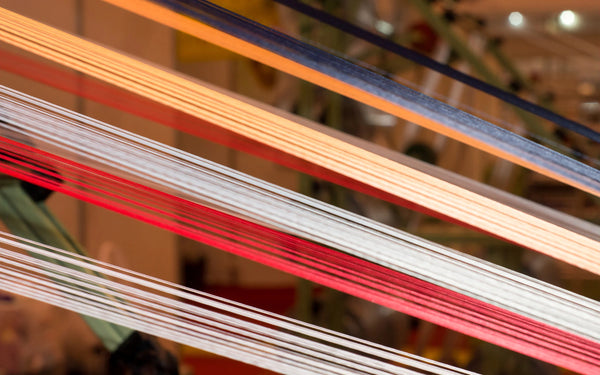Key Takeaways
The natural silk comes from the silkworm and its properties are incomparable. synthetic silk is chemically produced and less resistant. To distinguish them, burn a thread, smell the smell and touch its texture. real silk has a unique shine and unrivaled softness. Prefer 100% silk natural products like those from The Oversized Hoodie for optimal quality.
The French brand The Oversized Hoodie® 🇫🇷 is famous for its textile expertise, notably its collection of high-end, Oeko-certified 100% natural mulberry silk products -Tex® Standard 100. Free from toxic and chemical substances, and ecological, the collections natural silk pillowcase, silk night mask and silk sheets stand out for their incomparable softness and excellent value for money, providing an unrivaled feeling of comfort.
What is natural silk ?
Origin and production process
natural silk comes exclusively from the silkworm which feeds on mulberry leaves. These caterpillars spin silk to build their cocoon. The raw silk is then treated to obtain threads used in textile making. It is a complex process:
- Silkworm breeding
- Harvesting cocoons
- Soaking to dissolve cocoon glue
- Unwinding to obtain the wires
- Twisting the wires
- Possible dyeing
Silk requires a lot of care at each step. This is why it is a precious material.
The color of natural silk
Raw silk directly from the cocoon has an off-white tint. After dyeing, we obtain various shades:
- Pure white
- Deep black
- Gradations of beige, camel, ivory
- Delicate pastel tones
- Vibrant bright colors
Certain fabrics such as tussah keep the original ecru tone. Dyed silk remains luminous thanks to its ability to reflect light.
Also read: What is the natural color of silk ?
The quality of mulberry silk
The mulberry silk is the finest and robust. Its main qualities are:
- Texture soft, smooth, shiny
- Flexibility and fluidity
- Resistance to wear
- Insulation against cold and heat
- Absorbs moisture without being sticky
- Hypoallergenic
It is the ideal textile for bedding, clothing and accessories.

Also read: How is silk made ?
What is synthetic silk ?
Origin and manufacturing process
Unlike natural silk, synthetic silk is produced artificially by chemical synthesis. raw materials are products derived from petroleum or cellulose.
There are several types of artificial silk:
- Polyester: the most widespread fiber
- Viscose
- Acetate
- Radiates
- Modal
- Lyocell
The chemical manufacturing process is complex. It produces uniform fibersassembled into threads then woven.
Color of synthetic silk
Like natural silk, synthetic silk can be dyed in a wide range of colors. However, the shades are less rich and deep.
Some synthetic fabrics imitate the shifting, pearly appearance of wild silk, but the effect is artificial. They don't have the vibrance of real silk.
Also read: Where silk grows ?
Distinguish natural silk from synthetic
How to recognize real silk ?
Here are some simple tests to identify real silk:
- Rub the fabric gently between your fingers: it should have a silky softness
- Look at the fabric in the light: it should have a natural shine
- Burn carefully a thread: it burns slowly, giving off a smell of burnt hair
- Wet the fabric: it becomes darker and does not stick to the skin
- Silk does not wrinkle easily
A label 100% silk or wild silk generally guarantees an authentic product.
How to recognize silk from polyester ?
To distinguish synthetic silk:
- Its texture is rougher and plasticized
- It has a dull and artificial appearance
- When burned, it melts giving off a plastic odor
- Wet, it sticks to the skin
- It creases easily
Beware of the labels “vibrant silk” or “fabulous silk”: these are polyester!

Also read: How to wash silk ?
Comparison between natural and synthetic silk
Type and quality of each silk
Advantages of natural silk:
- Exceptional longevity
- Ultimate comfort, delicate touch
- Effective thermoregulation
- Optimal moisture absorption
- Beautiful and luminous shades
Disadvantages of synthetic silk:
- Limited lifespan
- Unpleasant artificial sensation
- Poor thermal properties
- Dull and bland shades
The real silk is incomparable in terms of qualities.
Is satin a variation of silk ?
The satin designates a particular weave which produces a shiny and smooth effect. It is made from different materials:
- Silk satin (the most prestigious)
- Cotton satin
- Polyester satin
The silk satin is the most refined and pleasant thanks to the properties of natural silk. synthetic satin is of inferior quality.
Our obsession with quality pushes us to use only the best silk, directly imported from the Zhejiang province in China where silkworm breeding reaches peaks of excellence.
— Geoffrey, Founder by The Oversized Hoodie®
Also read: Satin or silk : what are the differences ?
Various types of silk
Mulberry Silk
The mulberry silk is the most prestigious. Its resistance and its softness are incomparable. It is the luxury fabric par excellence used for haute-couture.
Tussah silk
tussah silk is a wild silk produced by a naturally occurring silkworm . Its raw and matte appearance is very popular for clothing.
Varieties of Artificial Silk
The most common imitations of silk are polyester, viscose, rayon and modal. Their properties vary slightly, but none match the fineness of real silk.

Also read: What are the different types of silk ?
Varieties of silk
| Variety of silk | Description | Usage |
|---|---|---|
| Dupioni silk | Slightly rough, threads of different colors | Clothing |
| Silk chiffon | Very light and transparent | Flowing clothing |
| Charmeuse silk | Glossy on one side, matte on the other | Evening dresses |
| Silk georgette | Light, crepe and semi-transparent | Women's clothing |
| Silk organza | Thin and rigid | Wedding dresses |
| Habotai silk | Light and soft | Liners |
| Crêpe de Chine | Light with crepe surface | Dresses and blouses |
| Shantung silk | Textured and irregular | Suits and dresses |
| Silk brocade | Relief patterns | Formal clothing and decoration |
| Velvet silk | Soft, velvety surface | Chic clothes |
| Jacquard silk | Complex patterns | Luxury clothing |
| Silk tulle | Very thin and light | Wedding veils and dresses |
| Cambric silk | Light and semi-transparent | Shirts and blouses |
| Pongee silk | Smooth and shiny | Painting on silk |
| Rayon silk | Artificial silk | Economic alternative |
The use of silk in various fields
Silk in the textile sector
Silk is used to make prestigious textile products:
- Clothing haute couture
- Lingerie fine and delicate
- Scarves and elegant scarves
- Ties and bow ties chic
- Gloves and stockings luxurious
- Refined wedding dresses
Its properties make it the exceptional textile for clothing.
Silk in the field of beauty
Silk is also widely used in beauty and well-being:
- Masks for the face
- Pillowcases
- Bed sheets
- Towels
- Bathrobes and dressing gowns
Its extreme softness and its ability to regulate temperature make it the ideal fabric for the skin and sleep.

Also read: Is silk warm ?
The Oversized Hoodie, manufacturer of 100% natural mulberry silk products
The Oversized Hoodie is a French brand specializing in cocooning, relaxation and well-being and beauty products in natural mulberry silk of superior quality ranging from 19 to 25 mommes.
At The Oversized Hoodie®, we are convinced that sleeping in real natural silk can literally change your life. The ultimate feeling of softness and comfort that mulberry silk provides is incomparable.
— Geoffrey, Founder of The Oversized Hoodie®
Pillowcase 100% natural mulberry silk
The silk pillowcase The Oversized Hoodie envelops the pillow in extreme softness for a restorative sleep.
Night cap 100% natural mulberry silk
The silk night cap protects hair and face to prevent friction and static electricity.
100% natural mulberry silk sleep mask
The silk sleep mask isolates light and allergens for complete rest.
100% natural mulberry silk bed linen and sheets
The silk bed sheets from The Oversized Hoodie are of exceptional quality for a dream sleep.
Also read: What material to wear in summer ?
Conclusion
To summarize, natural silk is an exceptional fiber with unique properties such as its softness, brilliance and comfort. From the breeding of the silkworm to the meticulous weaving, its manufacture requires a lot of know-how.
Its silky texture, its natural light and its quality are impossible to imitate. simple tests such as crumpling, touch and flaming make it possible to recognize real silk.
The mulberry silk is the most prestigious with its magnificent shine and its great resistance. Prefer 100% silk products from certified brands such as The Oversized Hoodie for guaranteed pure silk.
FAQ
How to recognize natural silk ?
Do the burning, touch and creasing tests. Real silk has a soft texture, a natural shine, a burnt hair smell and does not crease.
Is silk natural ?
The real silk comes exclusively from the silkworm and its cocoon. Synthetic imitations are artificial.
What is the best quality of silk ?
mulberry silk (mulberry bombyx) is the most prestigious for its finesse, robustness and softness.
What are the different types of silk ?
There are mulberry silk, tussah, dupioni, chiffon, charmeuse, etc. Discover all the varieties of silk.
Where to buy real silk ?
Choose brands certified 100% natural silk like The Oversized Hoodie. Beware of prices that are too low.
Where to find natural silk ?
Original silk is found in haberdashery, high-end lingerie and luxury accessories.
Is it more expensive to buy real silk ?
Yes, the production of natural silk requires a lot of attention to detail. Its price reflects its high quality.
Updated February 20, 2024







